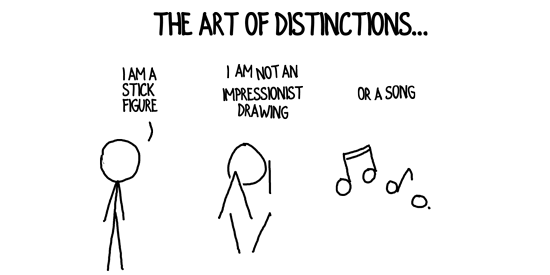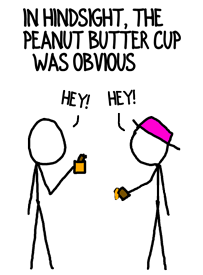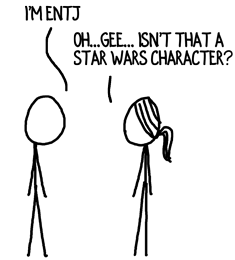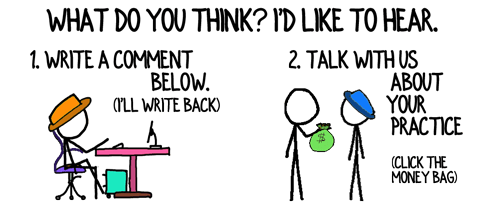For a consultant, there’s nothing more frustrating than a prospect who clearly needs you, but doesn’t realize it or has less urgency than a stalagmite. How do you shake sense into the decision maker? How do you knock the project loose so a rich opportunity falls into your lap? Diagnostics.
Over a decade ago I wrote a whitepaper for my corporate clients claiming, “In sales, nothing you say matters.” My point was that customers act based on their internal dialogue and feelings. A prospect turns into a customer at the Aha! moment—the critical, emotional tipping point when the customer “gets it.”

That emotional breakthrough results from an experience. If you were selling shoes (which I did in my youth) you could let a prospect feel the warm embrace of Italian leather and see the sexy styling on her foot. But you’re neither a cobbler nor a crispin. You and I are consultants.
As consultants, we’re often selling the intangible. Giving a “trial” may be impractical or impossible. Therefore, we have to guide our prospects’ internal dialogue by creating a mental experience. And one of the most powerful tools to accomplish that is…
… a diagnostic.
Virtually every consultant I work with develops a diagnostic. Why? Because a well-crafted diagnostic shows your prospects where they are and what they should do next. And what a prospect should do next is work with you!
The essence of a diagnostic:
where you are and what you should do next.
If you were a physician, you might use a thermometer as a diagnostic tool. It shows temperature on an easy to read scale (degrees). If your patient’s temperature is 98.6, they’re healthy. If it’s 105, they’re in trouble. If it’s 37, you pushed the Celsius button.
Your diagnostic can be as simple as a thermometer and still be extraordinarily effective. One consultant I work with, Rick Maurer, developed the Energy Bar—a deceptively simple, 7-point scale that helps leaders build support for change. Rick has generated interest around the world with that simple diagnostic.

Effective diagnostics excel at the two tasks mentioned above: showing prospects where they are and what to do next. In other words, the secret of your killer diagnostic that will win clients is nailing…
Distinctions & Implications
The three steps below will guide development of a great diagnostic that exposes your prospect’s need.
Step 1. Brainstorm Distinctions
Distinctions are a way of saying, “You are here. You are definitely not there.” For example, I often show ambitious consultants that they don’t need more visibility, they need more impact. I tell my corporate clients that there are only three consulting outcomes that add value, then we explore which one they need most.

The following questions will help you generate a list of distinctions:
- What separates clients who succeed from those who don’t?
- What do your savviest clients know that run-of-the mill clients don’t?
- How are the clients who will succeed in five years different from clients who are succeeding today?
- What steps did some clients take to overcome an issue?
- What’s the #1 indicator that a prospect has a problem you can solve?
Step 2. Select the Best Distinctions, Assign Implications
Look at your list from Step 1. Which distinctions are most likely to make a prospect say, “Aha!” and give them the direction they desperately need?
The best distinctions are those that clients haven’t considered in advance but are blazingly obvious in hindsight. The best implications give total clarity on the path forward.

Every result from your diagnostic should have an associated step forward. If the thermometer says you’re fine, then get back to work. If it says you have a fever, take two aspirin and go to bed.
Step 3. Develop a Simple Communication Framework
You can always fall back on the classic, 2×2 matrix. They’re easy to draw and explainable in about 15 seconds. But there are plenty of other possibilities.
Rick Maurer’s Energy Bar defines simplicity with a single line, and is easy to self-administer. The oft-used Myers Briggs assessment assigns four letters that are surprisingly straightforward to understand. (Whether they’re right or not is a separate conversation.)

The right diagnostic, deftly administered, will induce the Aha! moment that invariably leads to a consulting sale. They take a bit of thought and practice; however, developing an outstanding diagnostic will serve you in excellent stead.
What’s the best diagnostic you’ve ever encountered (inside or outside of consulting)?
The Energy Bar and Energy Bar diagnostic are property of Rick Maurer, and used with permission.
Text and images are © 2024 David A. Fields, all rights reserved.

 David A. Fields Consulting Group
David A. Fields Consulting Group 

I’m curious about the “when” to introduce a diagnostic. Is it the final step to converting a conversation already underway, or can it be the “foot in the door” to get a prospect to engage in the first place?
Excellent question, Doug. At every stage you want your prospect’s internal dialogue to be, “I need some help right now!” and the best way to induce that thinking is to help them experience the gap between where they are and their ideal world.
I frequently use a diagnostic at the front end of business development; for instance, when I’m giving a speech I will introduce a quick diagnostic, then audience members whose needs are acute are more likely to become clients.
On the opposite side of the business development process is a conversation to shake loose a stalled opportunity. In that case I have a proposal submitted and the prospect needs to get touch with the cost of delaying or skipping the project. A diagnostic creates urgency to take action now.
Good article. Thanks for writing it. Best diagnostic I have encountered is a set of four simple questions that can be focused on the aspect of the prospects operations under discussion: what is working well? What is not working so well? What needs to change? What leadership is needed to implement the change? Prior to the meeting, I will prepare a story around the four questions from another client to walk the prospect through what happened. Most times this leads to an in depth discussion about the prospect’s current situation, specifically where the prospect has been, where they are today, and where they want to go. Prospects typically respond well to the credibility of the story and how it could be leavaged to their situation.
I like that combination of diagnostic and case study. Especially when the question is broad and open ended like, “What’s working?” it’s very helpful have examples that give direction. And, as you pointed out, those examples also show you know your business. Thank you for the valuable contribution to the discussion, Lon.
Thanks David. As always,very valuable. I use this question in almost every conversation about a variety of issues:
On a scale of 1-10, with 10 being perfection and 1 being totally inept, where is your company around issue xyz?
Great question, Katharine. I’m a big fan of 1-10 questions. They always spark discussions and they add a flavor of quantitative robustness to even the most qualitative discussions. Thanks for adding that quickie diagnostic to the list.
I use informal diagnostics all the time and they are very useful. For example, when working with groups of potential decision makers, I use an informal diagnostic similar to Katharine except I make the process confidential. Each person has to write down their figure/phrase/idea individually and then we discuss the results as a group. This prevents groupthink and “boss magnetism.”
Terrific example, Zach. Building a process around a diagnostic and incorporating it into group discussions is a smart addition to our thinking.
David, this is a great approach. I have been using it with a very large prospect on a potentially high dollar sale. It has taken awhile to get the buyer to come around. He is smart, successful, and cautious. It seems I have had to utilize several diagnostics along the way, and it has taken me longer than I would have liked to get the buyer to progress. Nevertheless, this approach has helped build trust rather than rushing him through a quick sales process.
Congratulations, Scott, on your persistence and client-focused approach. Many consultants would have given up or tried to rush the process. It sounds like you’ve spent the time to understand your prospect and help him understand his own needs better. That’s the basis of a trusted-advisor relationship.
One consultant I’ve known for ages spent two years helping a CEO think through his issues– essentially one, long diagnostic process– and was rewarded with a seven-figure project. Solid approach; outstanding result.
Appears that you’re on your way to a similar success. Thanks for sharing!